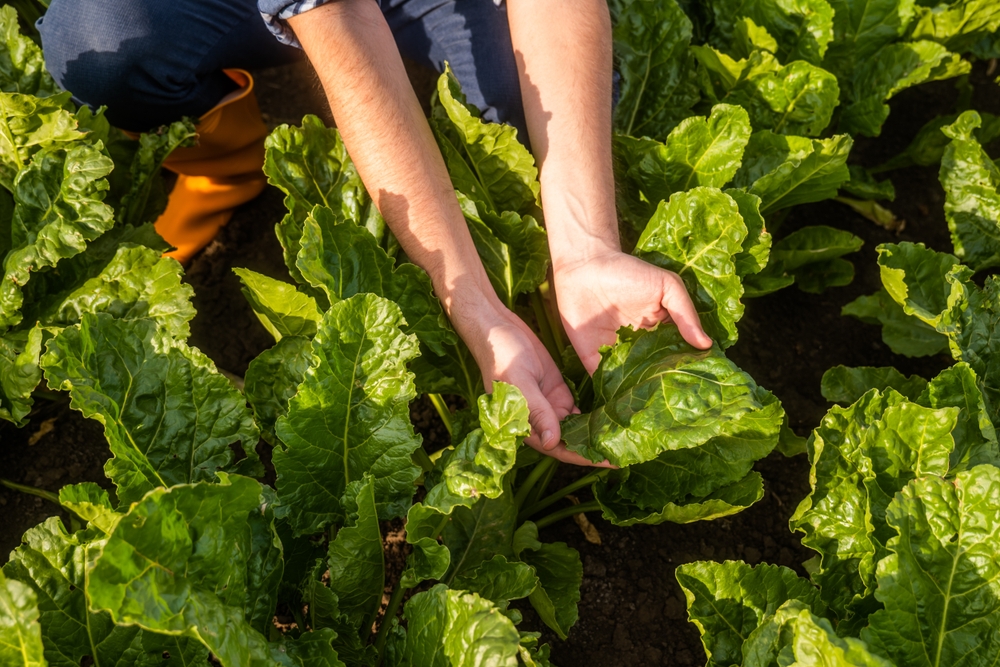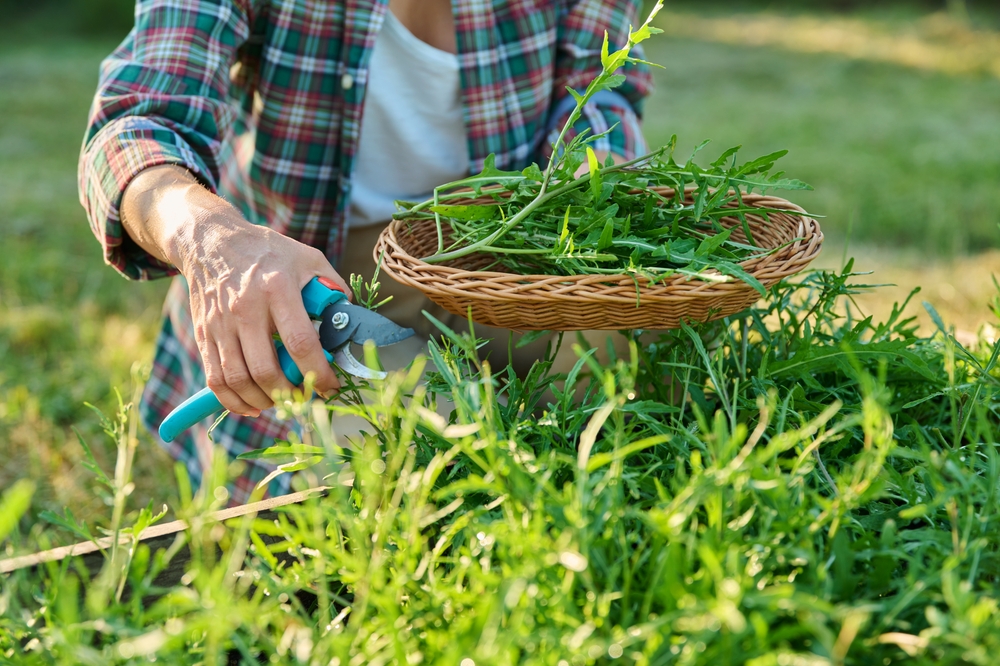
Image Source: Shutterstock.com
While most gardeners assume seeds need warmth to thrive, some crops actually prefer a brisk chill to kick-start their growth. These cold-loving champions don’t just tolerate lower temperatures—they use them as fuel, bursting through the soil with surprising vigor when other plants are still snoozing.
If you’ve ever doubted that your garden can get moving before the summer heat arrives, these hardy performers will change your entire planting strategy. Let’s dive into the fascinating world of crops that germinate stronger when the soil still has a bite.
1. Spinach Thrives In The Chill
Spinach is one of the earliest crops you can sow because its seeds respond exceptionally well to cool soil. Gardeners often find that spinach planted too late in warm weather bolts quickly, but cold soil encourages slow, steady, leafy growth. The crisp temperatures help the plant develop that rich green color and tender texture everyone loves. Even a light frost won’t deter it; in fact, it often comes out tasting sweeter. If you want a crop that rewards early ambition, spinach is your cold-soil champion.
2. Peas Love A Cold Start
Pea seeds are surprisingly rugged, happily sprouting in soils as cold as the mid-40s Fahrenheit. Their roots develop stronger and deeper when they’re started early rather than waiting for warmer days. Cooler temperatures also help peas climb vigorously once they emerge, turning trellises into towers of green. Starting peas early gives you a jump on the season before pests have a chance to settle in. With the right timing, you’ll harvest crisp snaps and tender shelling peas long before summer heat can slow them down.
3. Kale Flourishes In Cold Ground
Kale might be the definition of a tough crop, shrugging off chilly conditions from the seedling stage all the way to harvest. Cold soil actually improves its flavor, reducing bitterness and boosting sweetness. Early germination in cool temperatures helps kale build strong cell structure and vibrant color. It’s also less prone to early-season pests, making it even more appealing for gardeners. When everything else seems timid in the cold, kale shows up bold and ready.
4. Carrots Germinate Better When Cool
Carrot seeds can be fussy in warm climates, but they settle comfortably into chilled spring soil. Their delicate roots develop more uniformly when temperatures are lower, leading to straighter, smoother carrots. The cold helps slow down surface drying, which is key for their shallow-sown seeds. Although carrots take patience to germinate, starting them early rewards you with sturdy seedlings. If you’ve struggled with distorted or stubby carrots in the past, cooler soil may be exactly what they need.
5. Radishes Race Ahead In Cold Weather
Radishes almost seem impatient, bursting to germinate as soon as they sense cool soil. The cold allows them to develop crisp, peppery roots without becoming woody or pithy. They mature quickly, giving you a satisfying early-season harvest when most crops are just waking up. Cold soil also keeps radishes from bolting too early. For gardeners who crave fast results, this is one of the most rewarding cold-germinating crops around.
6. Lettuce Springs Up In Chilly Soil
Lettuce seeds prefer cooler temperatures to sprout consistently and evenly. Heat can cause them to germinate unevenly or not at all, making cold soil the ideal environment. The cool start helps produce delicate leaves and full heads that hold their texture longer. Even after emerging, lettuce loves crisp air and thrives before the sun gets too intense. If your goal is lush, vibrant greens early in the season, lettuce is a guaranteed win.
7. Beets Push Through Cold Ground Easily
Beet seeds are actually clusters of several seeds, and cold soil helps them germinate uniformly. The chilly environment encourages deep root formation, which leads to rounder, more flavorful beets. Their leafy tops develop rich color when temperatures are still low. Planting beets early helps them avoid stress from summer heat, which can toughen the roots. If you love both beet greens and roots, early planting gives you the best of both worlds.
8. Swiss Chard Handles Cold Starts Surprisingly Well
Swiss chard may look like a heat-loving plant with its vibrant stems, but it germinates successfully in lower temperatures. Starting it early helps the plant establish strong roots that support its long growing season. Cold soil strengthens its early growth, giving it a sturdy base for producing leaves for months. Shard seedlings also tend to experience fewer early pests in cooler conditions. This is a crop that rewards patience with abundance.
9. Arugula Springs Up Faster In The Cold
Arugula seeds practically leap out of the soil when given a cool start. Its peppery leaves develop bolder flavor in cold conditions, making early sowing ideal. Warm weather causes it to bolt quickly, but chilly soil extends its growing window. Even when temperatures drop unexpectedly, arugula continues to thrive without hesitation. If you love quick-growing greens with personality, arugula belongs at the top of your cold-soil list.

Image Source: Shutterstock.com
10. Turnips Develop Best From Cold Germination
Turnips germinate reliably in cold soil, using the cooler conditions to establish strong roots early on. The crisp temperatures help produce smoother skin and sweeter flavor. Starting turnips early gives them the space and time they need to form well-rounded bulbs before summer heat interferes. Cold soil also reduces the chance of premature bolting. Whether you enjoy turnip roots or their delicious greens, early planting sets you up for success.
Start Strong, Harvest Better
Cold soil might seem like a challenge, but for these ten crops, it’s the perfect beginning. Germinating early not only leads to stronger plants but also extends your growing season in the most satisfying way. When you choose crops that thrive in the chill, you get vibrant greens, sweeter roots, and harvests that arrive long before summer gardeners even get started.
Now it’s your turn—have you tried planting any of these in cold soil? Share your experiences in the comments section below so fellow growers can learn from your adventures.
You May Also Like…
- Seed Starting on a Budget Series: Germination
- How Storing Root Crops Extends Winter Food Supplies
- 9 Crops That Overwinter for a Spring Harvest
- How to Save Your Pots from Cracking in the Cold (Without Buying New Ones)
- How Cold Nights Improve Carrot Sweetness
Leave a Reply